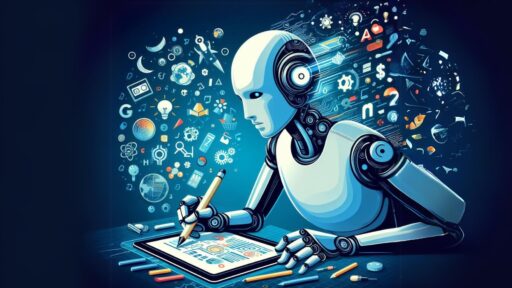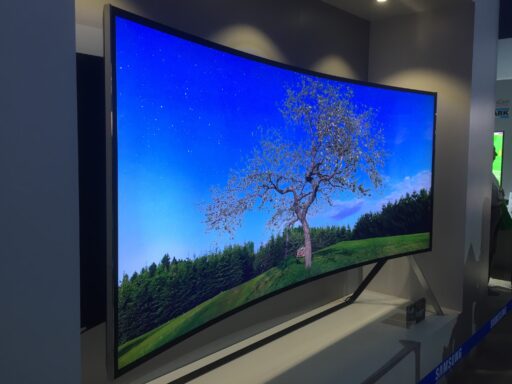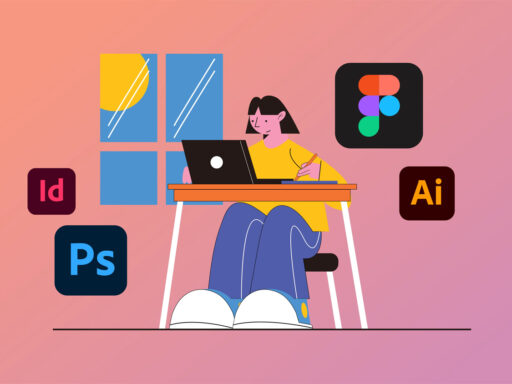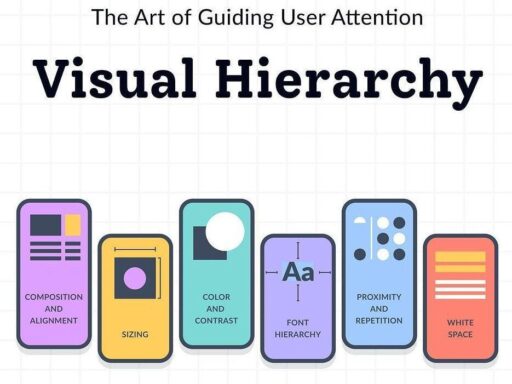Introduction:
In the ever-changing world of technology, artificial intelligence (AI) is revolutionizing graphic design, much like it does in other industries. AI is ushering in a new era of creativity, efficiency, and accessibility in graphic design, reshaping how designers work and unlocking fresh possibilities.
Automation and Streamlining Workflows:
AI is making a significant impact on graphic design by handling repetitive tasks. AI-powered tools can manage mundane jobs like resizing images, adjusting colors, and even creating basic designs from pre-made templates. This saves designers time and allows them to focus on the more intricate and creative aspects of their work.
Intelligent Design Assistance:
AI is becoming an indispensable design assistant. Design software infused with AI capabilities can analyze user behavior, preferences, and design trends to provide intelligent suggestions. From suggesting color palettes to recommending font combinations, AI helps designers make informed decisions and enhances the overall quality of the design process.
Personalization and User-Centric Designs:
AI enables designers to create highly personalized and user-centric designs. By analyzing user data and behavior, AI can tailor designs to individual preferences, creating a more engaging and meaningful user experience. This level of personalization can be especially valuable in marketing and branding efforts, where targeted and customized designs can significantly impact audience engagement.
Generative Design:
Generative design, powered by AI algorithms, is reshaping the way designers approach their work. Designers input specific parameters, and AI generates a multitude of design variations. This innovative approach encourages experimentation and exploration, pushing the boundaries of traditional design and fostering creativity. Generative design is particularly valuable when designing logos, layouts, and other visual elements
Enhanced Creativity with AI Artistic Tools:
AI is not just a tool for automation; it is also a source of inspiration. AI-based artistic tools, like neural style transfer algorithms, can transform ordinary images into unique and visually stunning works of art. Designers can leverage these tools to explore new artistic styles, experiment with unconventional designs, and push their creative boundaries.
Accessibility and Inclusivity:
AI in graphic design contributes to making design tools more accessible to individuals with varying levels of expertise. User-friendly interfaces and AI-guided functionalities enable even those with limited design skills to create professional-looking designs. This inclusivity is empowering individuals and small businesses to produce visually appealing content without the need for advanced design knowledge
Ethical Considerations:
While AI brings numerous benefits to the graphic design industry, it also raises ethical considerations. Designers need to be mindful of the potential biases present in AI algorithms and ensure that designs produced by AI are culturally sensitive and do not perpetuate stereotypes. Ethical considerations in AI-driven design are crucial for maintaining responsible and inclusive creative practices.
Conclusion:
The impact of AI on graphic design is profound and multifaceted. From automating routine tasks to fostering creativity through generative design, AI is reshaping the design landscape. As designers embrace AI-powered tools, they have the opportunity to streamline workflows, enhance creativity, and create designs that are not only visually compelling but also deeply personalized and inclusive. The synergy between human creativity and AI capabilities promises a future where graphic design continues to evolve, pushing the boundaries of what is possible in visual communication.






